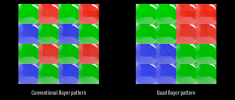The 48mp images arent.
They're soft and contain severe artefacts from debayering.
The 12mp are fine though for a tiny sensor, albeit a horrible 4:3 aspect so i end up with around 10 after cropping to 16:9 or 3:2.
Video wise the quality is significantly better than my Mavic 2 Pro, presumably due to the higher bit rate and lower compression.
They're soft and contain severe artefacts from debayering.
The 12mp are fine though for a tiny sensor, albeit a horrible 4:3 aspect so i end up with around 10 after cropping to 16:9 or 3:2.
Video wise the quality is significantly better than my Mavic 2 Pro, presumably due to the higher bit rate and lower compression.












